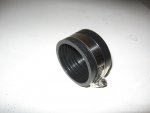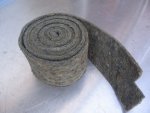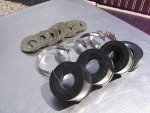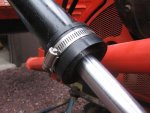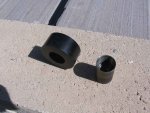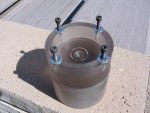Lil Foot
Well-known member
Lifetime Member
Equipment
1979 B7100DT Gear, Nissan Hanix N150-2 Excavator
After rebuilding my B219 FEL, a little forensic work on the old wiper seals & o-rings revealed that most of the damage was from grit- Arizona is dusty, dusty, dusty. I felt that if I could keep most of the dirt from reaching the seals, their life should be extended noticeably.
I found that clamp-on rubber caps for 2" ABS were exactly the right ID for the OD of my cylinders. I cut a 1 1/8" hole in the cap, & slit it so I could get it around the ram & cylinder. I had some 3" X 3/16" industrial felt laying around, so I made (8) 2 3/16" OD felt washers with 1 1/8" holes, & slit them also. A few drops of oil on each washer, assembled them so none of the slits lined up, and clamped them in place. They clear everything on the FEL all through it's travel, and should cut down the dirt intake- easy to remove & clean if necessary.
Caps were $2.90 each.
I found that clamp-on rubber caps for 2" ABS were exactly the right ID for the OD of my cylinders. I cut a 1 1/8" hole in the cap, & slit it so I could get it around the ram & cylinder. I had some 3" X 3/16" industrial felt laying around, so I made (8) 2 3/16" OD felt washers with 1 1/8" holes, & slit them also. A few drops of oil on each washer, assembled them so none of the slits lined up, and clamped them in place. They clear everything on the FEL all through it's travel, and should cut down the dirt intake- easy to remove & clean if necessary.
Caps were $2.90 each.
Attachments
-
75.5 KB Views: 316
-
68.9 KB Views: 305
-
78.2 KB Views: 334


